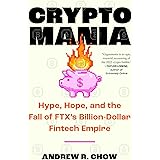Are you an investor grappling with the complex decision of allocating capital between burgeoning digital assets and established tangible property? In the accompanying video, Stuart Wyeth provocatively posits a future where Bitcoin reaches an astounding $13 million by 2045, challenging conventional notions of investment returns. This assertion naturally sparks a critical discussion regarding the comparative merits of Bitcoin versus property investments, urging savvy investors to scrutinize their portfolios and strategic outlook.
Wyeth succinctly highlights Bitcoin’s remarkable average annual return of 60%, a figure that undeniably dwarfs many traditional asset class performances. He further describes Bitcoin as a “complete mirror on the M2 money supply,” suggesting a fundamental link between its price appreciation and broader economic liquidity. This perspective demands a deeper dive into the macroeconomic forces at play and the specific characteristics that distinguish these two formidable investment avenues.
Understanding Bitcoin’s Macroeconomic Mirroring and Exponential Growth Potential
The notion that Bitcoin acts as a “mirror on the M2 money supply” suggests a powerful mechanism driving its valuation. Essentially, as central banks expand the money supply—M2 measures currency, checking deposits, and easily convertible near money—Bitcoin’s fixed supply makes it an increasingly scarce asset. This scarcity, juxtaposed against a depreciating fiat currency, naturally drives up its price.
Consequently, Bitcoin becomes a hedge against inflation, appealing strongly to investors seeking to preserve purchasing power in an era of quantitative easing. The projected $13 million valuation by 2045, while ambitious, is predicated on continued global monetary expansion and increasing mainstream adoption. Such a trajectory implies a substantial capital appreciation unparalleled by most traditional assets.
The Role of Scarcity and Network Effects in Digital Asset Value
Bitcoin’s value proposition is fundamentally built on its absolute scarcity, capped at 21 million coins. This hard limit contrasts sharply with fiat currencies, which can be printed ad infinitum, or even real estate, where new developments can alter supply dynamics. Furthermore, the network effect plays a crucial role; as more individuals and institutions adopt Bitcoin, its utility and perceived value strengthen exponentially.
Institutional interest, evident through product offerings like Bitcoin ETFs and corporate balance sheet allocations, signifies growing confidence in its long-term viability. These factors collectively contribute to the possibility of the exponential growth that Stuart Wyeth references. Investors considering this asset must evaluate its historical volatility against its potential for significant capital appreciation.
Analyzing Property Investment: The Strategic Focus on High-Yield HMOs
While Bitcoin offers explosive growth, property continues to be a cornerstone of many investment portfolios, lauded for its tangible nature and potential for consistent income. Stuart Wyeth’s advice to focus on “anything above six-bed HMOs” offers a very specific and insightful strategy within the real estate domain. HMOs, or Houses in Multiple Occupation, represent a distinct niche offering superior rental yields compared to single-let properties.
This strategy targets a specific demographic—often students or young professionals—who seek affordable, flexible accommodation. By converting larger properties into multiple rentable rooms, landlords can maximize rental income per square foot, significantly boosting overall yield. Such an approach demonstrates a deep understanding of market dynamics and a commitment to optimizing property returns.
Maximizing Returns Through Strategic Real Estate Development
Investing in HMOs requires a different skillset and risk profile than passive real estate investing. This approach often involves development, navigating planning regulations, and managing multiple tenants. The expertise lies not just in acquisition but in value addition through renovation and efficient property management.
For example, acquiring an older, larger terraced house in a university town and converting it into a compliant 6-bed HMO can yield double-digit rental returns. These returns, combined with potential capital appreciation of the underlying asset, create a compelling investment case. However, the illiquidity and management intensity of property contrast sharply with the fluidity of digital assets.
Comparing Investment Philosophies: Yield-Focused Property vs. Growth-Oriented Bitcoin
The core of the discussion between Bitcoin and property investment often boils down to differing investment philosophies. Property, particularly strategic plays like HMOs, appeals to investors prioritizing consistent cash flow and long-term, relatively stable capital growth. The 60% average return attributed to Bitcoin by Wyeth, however, signals an entirely different risk-reward profile, emphasizing aggressive growth and capital appreciation.
Consequently, an investor’s choice is frequently dictated by their risk tolerance, investment horizon, and desired financial outcomes. A conservative investor might prefer the tangible security and regular income of property. Conversely, a growth-oriented investor might be willing to embrace Bitcoin’s volatility for the promise of extraordinary returns.
Portfolio Diversification and Risk Management in a Modern Investment Landscape
Rather than viewing these assets as mutually exclusive, sophisticated investors often consider both as integral components of a diversified portfolio. Diversification mitigates risk by spreading investments across various asset classes with different correlation characteristics. Incorporating both a high-growth digital asset like Bitcoin and income-generating real estate can provide a robust strategy.
For instance, an investor might allocate a smaller, speculative portion of their portfolio to Bitcoin, leveraging its potential for significant upside. Concurrently, a larger, foundational component could be dedicated to well-managed property, ensuring stable income and a degree of inflation protection. This balanced approach allows investors to pursue both aggressive growth and foundational stability, adapting to the evolving global financial landscape.







